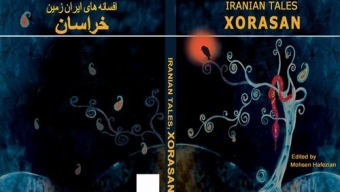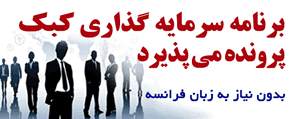Yusef Amiri
Tales constitute an important part of culture for any nation. As time goes on, some of these tales are codified and collected as songs and stories and end up forming the written culture. This, however, is only the tip of the iceberg as most tales are handed down orally among generations. Tales usually represent archetypes of the collective unconscious of people, and are thus manifested as stories. Characters in these tales are broader versions of these archetypes in order to allow them to fit certain roles in various stories. These characters represent positive and negative values such as love, purity, truth, beauty, chivalry, and dishonesty. Dialects represent linguistic heritage and preserve a common background, and so do tales in preserving cultural values and history.
Our age, despite being called the age of communication, information, and globalization, is basically an American animated story that is replacing the tales of other nations. Now children all over the world are learning about the stories of Snow White, Cinderella, Rapunzel, and others instead of their own national and traditional tales, especially in Iran where we have native counterparts to such stories (like Māh-Pishāni, Dokhtar-e Chel-Gaz Mu or The Girl with Forty-Ell Hair).
Collecting and documenting such local and traditional tales are a cultural must; the same way collecting and documenting local dialects are an important cultural task. Despite the economical pressure and lack of general attention to such tasks, some people remain who care enough to spend from their own pockets, life, and energy to collect and publish local tales. Consider, for example, Mr. Hamid-Reza Khazai, a person who visited many villages and towns in Khorasan Province of Iran in 1990’s and recorded tales told by elderly people in those regions and published the result in 15 volumes with notes about the dialectal materials. There are similar efforts by other Iranians from other provinces.
Multissage Inc in Montreal has started a project to publish bilingual books (Persian/English or Persian/French) of Iranian tales based on the tales published in Iran. The purpose is to familiarize immigrant Iranians, especially ones in the second generation, as well as non-Iranians with various Iranian tales. The collection called ‘Iranian Tales’ is expected to have 12 volumes, a number considered sacred in Iranian culture and history. Ten of the volumes would be based on tales from present-day Iran like Kurdistan, Azarbaijan, Guilan, Mazandaran, and so on. The two other would be based on tales from Afghanistan, Tajikistan, and Central Asia, historically part of the Greater Iran.
The first volume based on the tales from Khorasan (or Xorāsān) was published in March 2012. It contains 12 stories and has two versions in the book: the Persian version of the book is based on Khazai’s work, rewritten in standard Persian (from the local dialect) and the English version of the book is the work of a team of translators.
Canada, being a country with increasing number of immigrants and a place where different cultures meet and interact, is an important place to present such works with a two-fold purpose: informing other nations about Iran’s culture and keeping the cultural ties between Iranian immigrants and their ancestral land.
مطالب مرتبط

قصه
نوامبر 24, 2016
گزارش شاهنامه از اسطورهی ضحاک
نوامبر 24, 2016
چه کسی این بلا را سر شهر آورده است؟!
نوامبر 04, 2016
گنجشک کوچولو و پرندگان شکاری
نوامبر 04, 2016
قلک
نوامبر 04, 2016
درخشش روح امیدوار ایرانی در تیرگان
جولای 24, 2013





























































